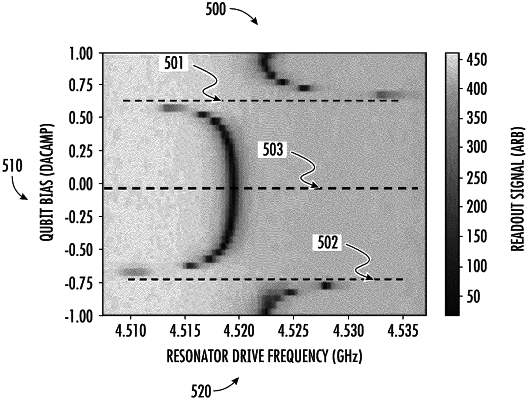| CPC G06F 30/20 (2020.01) [G06N 10/00 (2019.01); G06F 2111/10 (2020.01)] | 20 Claims |

|
1. A method for calibrating a system comprising:
a first qubit, a second qubit, and a coupler coupled to the first qubit and the second qubit, the coupler configured to mediate a first degree of coupling between the first qubit and the second qubit,
the method comprising:
providing a first model for the first qubit and the second qubit, wherein the first model provides a first resonance frequency of the first qubit as a function of a first bias applied to the first qubit and provides a second resonance frequency of the second qubit as a function of a second bias applied to the second qubit;
determining a first set of parameters of the first model such that the first model estimates the first resonance frequency in response to the first bias and the second resonance frequency in response to the second bias;
providing a second model, wherein the second model provides the first resonance frequency and the second resonance frequency as a function of a third bias applied to the coupler;
determining a second set of parameters of the second model such that the second model estimates the first resonance frequency and the second resonance frequency in response to the third bias;
providing a third model, wherein the third model provides the first resonance frequency as a function of the second bias;
determining a third set of parameters of the third model such that the third model estimates the first resonance frequency in response to the second bias and estimates a second degree of coupling between the first qubit and the second qubit in response to the first bias and the second bias, wherein the second degree of coupling is not mediated by the coupler; and
providing a fourth model based on the second set and the third set of parameters, wherein the fourth model describes the system as a function of the first resonance frequency of the first qubit, the second resonance frequency of the second qubit and a third resonance frequency of the coupler.
|